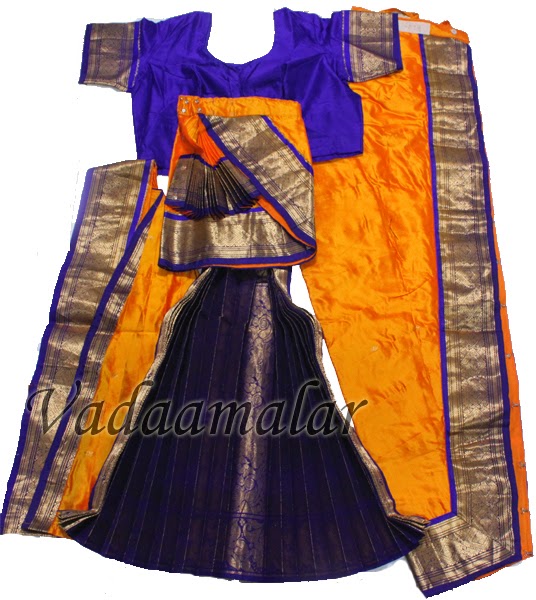Temple Jewelry was pervasive during the celebrated historical periods in South India such as the Chola Dynasty, the Pandya Dynasty and the Krishnadevaraya rule from the 9th century till the 16th century. Temple Jewelry is studded with Kemp stones come either in dark reddish maroon or dark green color.
Popular for Bharatanatyam & Kuchipudi Jewellery
 |
| Naga Pathakam |
 |
| Peacock Dollar /Mayil Pathakam |
Available at www.Vadaamalar.com/TempleJewellery
South Indian women consider wearing temple ornaments on important festivals and auspicious occasions as a symbol of good luck.
 |
| Original Kempu Stone Jhumki |
 |
| Traditional South Indian Jhumki |
Original temple jewellery is made of silver and plated with gold. This jewellery set is 100% hand made jewellery. Artisan families in the district of Nagarcoil , Tamil Nadu has been mastering this art for more than 100 years.
Many of these age-old designs are still fashioned. The jewellery of Tamil Nadu reveals the acme of the goldsmith's art.
 |
| Ear Ring Mattal |

“Temple jewellery is unique to Vadasery. It is the only place in the country where this is made. There are 52 families engaged in the craft in this village, 300 craftsmen in all,” says L. Balu, Assistant Director, Handicrafts, Office of the Development Commissioner (Handicrafts) in Nagercoil.
 |
| Chandithran & Sooriyan Head Set |
 |
| Thala Saman (Head Set with Sun & Moon) |
“Temple jewellery” made in Vadasery has come to mean jewellery made in silver covered with gold leaf or dipped in gold and generally follows the age-old method. But the deep red of cabochon rubies imported into Tamil Nadu, the soothing green of emeralds and the dull fire of uncut diamonds have been replaced by the glitter of imitation stones.
Available at www.Vadaamalar.com/TempleJewellery
Original temple jewelry is made of silver and plated with gold. This jewellery set is 100% hand made jewelry. Traditional temple jewelry ornaments are used by many Indian classical dances including Bharatanatyam, Kuchupudi, Kathak and Mohiniyattam








